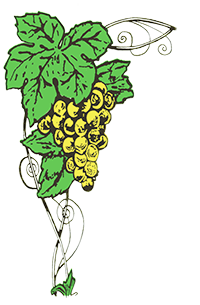The Burgundy Vineyards
"The wines of Burgundy are the fruit of two thousand years of history"
The Burgundy vineyards comprise almost 29,500 hectares of vines with the Appellation d’Origine Contrôlée (A.O.C.), the Protected Designation of Origin label, and produce around 1,5 million hectolitres (equivalent to 200 million bottles sold).
Burgundy is situated at the crossroads of a Mediterranean climatic environment in the South, continental conditions from the North and oceanic influences from the West. This geographic situation gives the Burgundy wines their unique identity and provides a privileged terrain for the Pinot Noir and Chardonnay grape varieties.
The Burgundy terroir is the result of a subtle and lasting alchemy of several factors:
- Grape varieties
- Natural components
- Climate
- Orientation and exposure
- Soil and subsoil
- Craftsmanship
The wines of Burgundy are almost exclusively mono-varietal which bestows them with a great purity of character. Our vineyards continue to be the definitive reference for distinctive Chardonnay and Pinot Noir grapes.
Thanks to its unique geographical situation and favourable meteorological conditions, Burgundy enjoys a semi-continental climate. According to the season, the vineyards benefit from oceanic influences, and the levels of sunshine and summer temperatures allow the grapes to reach optimum maturity, thus concentrating the aromas.
The orientation of plots and the exposure of the vines on the slopes at heights of between 200 and 500 metres in altitude mean a greater resistance to frosts, a natural protection from the West wind and maximum levels of sunlight.
A single variety of grape
As our wines are made from a single variety of grape, the concept of vintage is important, and each vintage has its own personality.
As well as the prestigiously titled Grand Crus, Premiers Crus and evocative Village names for which they are reputed, Burgundy is recognised for its more contemporary wines. Fruity, fresh, mellow and harmonious, they are, in a word, agreeable and very drinkable. Their elegant aromas and generous flavours go so well with dishes from the world over.
Burgundy offers both wines to lay down and younger wines to drink now.
The Chablis Vineyards
Half way between Paris and Beaune, Chablis is the golden gate to the Burgundy wine growing area. The Chablis vineyards are situated on the slopes of the Serein River valley, a region of rolling hills and wooded peaks. Stretching across about twenty towns and villages, the Chablis vineyards consist of 6,800 hectares, of which 4,700 are currently in production. The total volume of wine produced annually is on average 250,000 hectolitres, which makes Chablis the biggest producing area by volume of white Burgundy wines. The wines are made from a single grape variety, Chardonnay, which draws its delicate character from the soil of Chablis. This stony soil, a chalky clay, was formed in the Jurassic era and the Kimmeridgean clay layer is predominant, providing an excellent terrain for the Chardonnay vines.
The regulatory organisation for wine-producing regions, the Institut National des appellations Contrôlées, has defined four distinct designations on this terroir: PETIT CHABLIS, CHABLIS, CHABLIS PREMIER CRU and CHABLIS GRAND CRU.
- "Petit Chablis" (713 hectares): grapes picked mainly on the plateaux situated on the outskirts of the Chablis vineyards. (Yield: 60Hl/Ha)
- "Chablis" (3,126 hectares) On slopes with a northern or north-eastern exposure and on high plateaux. (Yield: 60Hl/Ha)
- "Chablis Premier Cru" (762 hectares) 40 climats - named parcels of vine-planted land - evenly spread over the left and right banks of the Serein River. On south-west and south-east facing slopes. (Yield 58Hl/Ha)
- "Chablis grand cru" (106 hectares) Made from grapes picked exclusively on the slopes on the right bank of the river opposite the town, seven climats form the Chablis Grand Cru. They are mainly south-west facing. (Yield 54 Hl/Ha).
Chablis enjoys a continental climate
Chablis enjoys a continental climate with four distinct seasons. Winters are harsh, spring can be frosty, summers are hot and autumn brings perfect conditions for the grapes to ripen.
Chablis wines are the image of the land on which they grow; beautifully clear with extraordinary minerality and remarkably fine aromas.
